Have you heard the MONTEZUMA?
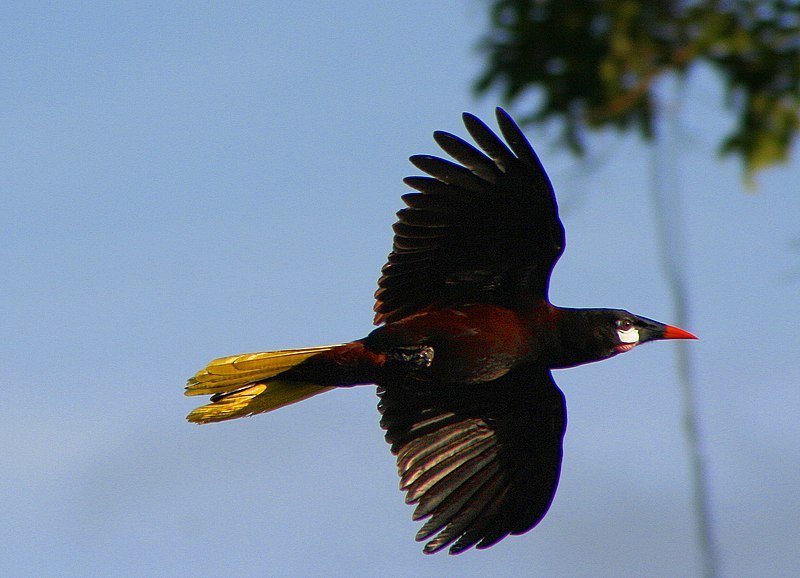
MONTEZUMAS
People are never ‘in the middle’ about Montezumas – they either LOVE or HATE these striking birds. It is nice to hear their unusual calls on your evening walk but not nice to be awakened by a massive Montezuma colony at 5.00 in the morning!
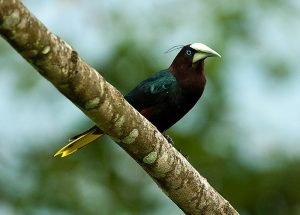
We all have heard the distinctive call of the Montezuma Oropendola or the lesser-talked-about Chestnut-Headed Oropendola – the two blackbird species that inhabit our neighborhoods. So while the Montezuma is much more famous as it is bigger and carries the distinctive name of a powerful Aztec emperor they do not deserve all the blame! The birds are not shy about being seen either, their yellow tails providing a stark contrast against their black bodies as they fly from treetop to treetop. With an unforgettable call, the strangest nests you have ever seen, and their striking plumage, Oropendolas are adored by tourists but have a more complex relationship with the local residents.
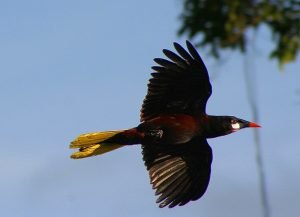
OUR TWO OROPENDOLAS
Two Oropendolas species inhabit Costa Ballena – and they are very similar in appearance and habits. The Montezuma is the larger of the two, being about 30% longer than the Chestnut Headed Oropendola. Funnily, the Montezuma Oropendola is mostly chestnut with a black head while the Chestnut Headed Oropendola is mostly black with a chestnut head. Both species keep bright yellow tails as their trademark. The word “oropendola” comes to us from Spanish: “oro” meaning “gold” and “péndola’ meaning “feather”.
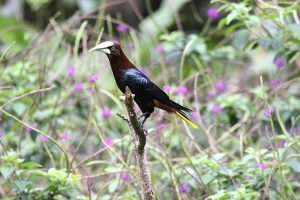
THE CALLS
Male Oropendolas are famous for their calls – I remember talking to my Australian friend when a nearby Oropendola interrupted our conversation resulting in many questions about the bird that made such a ‘cool sound’. This peculiar sound has been described as:
“…a long-drawn, far-carrying liquid gurgle, an undulatory sound ascending in pitch” or
“conversational bubbling followed by loud gurgles, tic-tic-glik-glak-GLUUuuuuu”
“… a very quiet series of similar syllables which rise from 250 Hz to 900 Hz. This introductory portion of the song is often truncated, but may be as long as 1.5 seconds. The remainder of the song is a series of overtone-rich overlapping syllables most of which are upslurred. The total song lasts between 0.75 and 2.0 seconds and often rises to a maximum frequency of > 8000 Hz. The terminal syllable is a longer downslurred note and is usually the loudest part of the song”
However you may put it, you will be struck by the song the first time you hear the call, a cool and complex mix of sounds emanating in all directions from the highest treetops.
THE WAKE UP CALLS
While the songs of the Oropendolas are very interesting and striking they have their critics – the people who happen to live under their nests! Oropendolas are colonial nesters with potentially dozens of nests being built in the same tree. Each colony can be made of up to 40-50 females and 4-5 males. While a single male Oropendola can create a ruckus, imagine two, three or more of them starting their calls at sunrise, high-perched roosters that have zero disregard for those who happen to live under their trees. The females are not quiet either, and while they do not sing they can go on with a seemingly never-ending chatter.
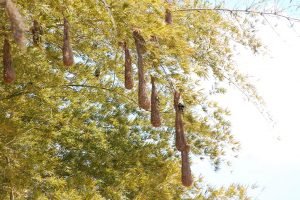
THE NESTS AND NESTING
Oropendola nests are another aspect which brings them fame – these are woven contraptions, hanging from high branches, some 60-180cm in length. Dozens of nests can be found within the larger colonies under the same tree. The birds have something called a ‘female defence nesting system’. While the females are building their nests, the males battle it out and repeatedly fight each other off, gaining in ranking based on the outcomes of the contests. In the end one male is crowned the winner and takes over the colony as the alpha male, fathering most of the chicks. Interestingly, when the winning male leaves the other males swoop in in to watch over and defend the colony until the alpha’s return.
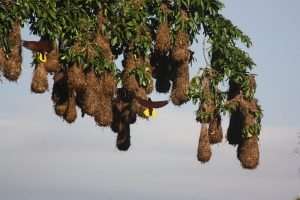
ARCH-ENEMIES
Oropendolas have two arch-enemies – the Cowbird and the Botfly. Cowbirds are nest parasites, laying their eggs in nests that clearly do not belong to them, and Oropendolas are their favourite victims. Many Cowbird chicks are unknowingly raised by the Oropendolas as their own. Chestnut Headed Oropendolas are easily taken advantage of, but Montezumas put up a fight – they will actively attack any Cowbirds that approach the colony. Interestingly, the top cause of Oropendola chick mortality is the Botfly whose larvae infect the chicks – and this same larvae is the main food source for the young Cowbirds which are themselves parasitizing the nest.
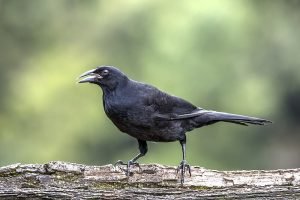
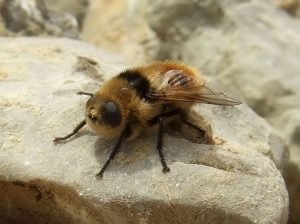
CONSERVATION STATUS
You will be happy to hear that our Oropendolas are under no threat of extinction; in fact that are doing very well and classified as species of ‘least concern’, as are the other four Oropendola species which do not range in Costa Rica. And, judging by stories I have heard from the local community, the birds are becoming more and more common in our Costa Ballena area, as these lands and Costa Rica in general are going through a process of ‘re-foresting’. So get used to hearing (or being woken up) by the sounds of the Montezuma and Chestnut Headed Oropendolas!
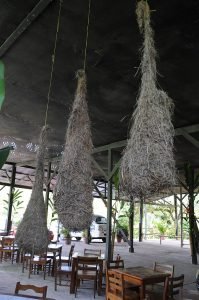
Do you dream of living in the midst of breathtaking tropical scenery and amongst amazing animals like the burbling Montezuma? At RE/MAX WE SELL PARADISE, we list hundreds of tropical properties – homes, land, farms, estates & businesses – all within a stone’s throw of the amazing rainforests, mountains, beaches and resident exotic animals that make Costa Ballena a world-famous destination. Start your journey to paradise by browsing our property listings here.



